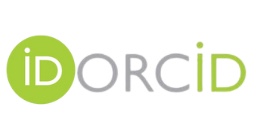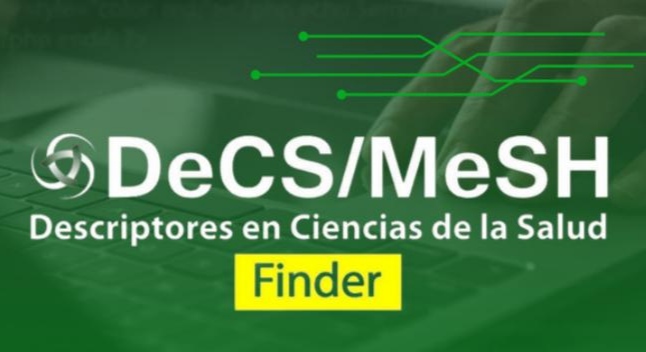Medicine Prescription for Older Adults in Primary Health Care
Keywords:
aged, prescriptions, polypharmacy, drug interactions, Primary Health CareAbstract
Introduction: The physiological changes experienced by older adults produce alterations in pharmacokinetics and pharmacodynamics, which increase the susceptibility to adverse drug reactions and drug interactions. Objective: To characterize the prescription and indication of medications in older adults. Methods: A descriptive, cross-sectional study was conducted at the Main Municipal Pharmacy of Santa Clara, Villa Clara province, from July 2023 to January 2024. The sample consisted of 852 patients with current prescription certificates for controlled medications. A sample of 361 patients was selected through simple random sampling. The variables studied were: sex, age, diagnosis, number of medications, medications prescribed, and drug interactions. The results were presented in tables using absolute numbers and percentages. The principle of confidentiality of the information reviewed and certificates for controlled medications was respected. Results: Females predominated 65.10 % and 49.58 % of patients were between 60 and 70 years old. The most frequent diagnosis was arterial hypertension 73.13 %, 45.71% were taking three to four medications, and clinically significant interactions were allopurinol-hydrochlorothiazide, allopurinol-enalapril, clopidogrel-acetylsalicylic acid, and insulin-glibenclamide. Conclusions: Older adults with the highest medication consumption were women between 60 and 70 years old. The most common condition was arterial hypertension. Clinically significant drug interactions are common, referring to the age-related changes in pharmacokinetics and pharmacodynamics.
Downloads
References
1.Álpizar Cortes JE, Ángeles Lozano KL, Ávila Ballesteros D, Luna Calva LL, Torres Cano WD, Olvera Hernández EG, et al. Identificación de interacciones medicamentosas potenciales en pacientes geriátricos. JONNPR [Internet]. 2020 [citado 8 Feb 2024];5(9):998-1009. Disponible en: http://scielo.isciii.es/scielo.php?script=sci_arttext&pid=S2529-850X2020000900998&Ing=es
2.Organización Mundial de Salud. Envejecimiento y salud. Datos y cifras. OMS [Internet]. 2021 [citado 13 Feb 2024]. Disponible en: https://www.who.int/es/news-room/fact-sheets/detail/ageing-and-health
3.García-Muñío R, Satústegui-Dordá PJ, Tejedor-Hernández L. Interacciones farmacológicas potenciales en población mayor de 64 años atendida en Atención Primaria. SEMERGEN [Internet]. 2020 [citado 6 Feb 2024];46(4):254-60. Disponible en: https://www.elsevier.es/es-revista-medicina-familia-semergen-40-articulo-interacciones-farmacologicas-potenciales-poblacion-mayor-S1138359319304484
4.Ramírez Pérez AR, Ramírez Pérez JF, Borrell Zayas JC. Interacciones medicamentosas como un problema de salud imperceptible en la población. Rev Cubana Med Gen Integr [Internet]. 2020 [citado 12 Feb 2024];36(1):e1091. Disponible en: http://scielo.sld.cu/scielo.php?script=sci_arttext&pid=S0864-21252020000100007
5.Fick DM, Semla TP, Steinman M, Beizer J, Brandt N, Dombrowski R, et al. American Geriatrics Society 2019 updated AGS beers criteria® for potentially inappropriate medication use in older adults. Journal of the American Geriatrics Society [Internet]. 2019 [citado 16 Feb 2024];67(4):674-94. Disponible en: https://pubmed.ncbi.nlm.nih.gov/30693946
6.O’Mahony D, Cherubini A, Renom Guiteras A, Denkinger M, Beuscart JB, Onder G, et al. Criterios STOPP/START para prescripción potencialmente inapropiada en personas mayores: version 3. European Geriatric Medicine. 2023. 14:625–32. doi: https://doi.org/10.1007/s41999-023-00777-y
7.Asociación Médica Mundial. Declaración de Helsinki de la AMM. Principios éticos para las investigaciones médicas en seres humanos. Ratificada en la 64ª Asamblea General, Fortaleza, Brasil, octubre 2013. Helsinki: 18ª Asamblea Mundial[Internet]. 1964 [citado 10 Feb 2024]. Disponible en: https://www.wma.net/es/policies-post/declaracion-de-helsinki-de-la-amm-principios-eticos-para-las-investigaciones-medicas-en-seres-humanos/
8.Asenjo-Alarcón J. Polifarmacia en pacientes con diabetes tipo 2 e hipertensión arterial atendidos en un hospital provincial. Rev Finlay [Internet]. 2022 [citado 22 Feb 2024]; 12(4): [aprox. 6 p.]. Disponible en: https://revfinlay.sld.cu/index.php/finlay/article/view/1203
9.Cruz-Aranda JE. Manejo de la hipertensión arterial en el adulto mayor. Medicina Interna México [Internet]. 2019 [citado 14 Ene 2024];35(4):515-24. Disponible en: https://www.scielo.org.mx/scielo.php?script=sci_arttext&pid=S0186-48662019000400515
10.Ascar GI, Hespe CB, Hernández MM. Relación entre polifarmacia y número de médicos consultados por pacientes ancianos. Rev Cubana de Farmacia [Internet]. 2015 [citado 17 Feb 2024]; 49(3):491-501. Disponible en: http://scielo.sld.cu/pdf/far/v49n3/far09315.pdf
11.Arroyo-Gámez FA, Heyerdahl-Viau I, Pérez-Sánchez R, Prado-Galbarro FJ, Sánchez-Herrera K, Martínez-Núñez JM. Potenciales interacciones medicamentosas en un centro de salud público de México. Rev Cubana de Farmacia [Internet]. 2023 [citado 22 Ene 2024]; 56(2):e892. Disponible en: https://revfarmacia.sld.cu/index.php/far/article/view/892
12.Zuñiga A, Vera Franco V, Bucaram J, González J, Cáceres L. Antidiabéticos orales y su interacción con medicamentos modificadores de enfermedad. Rev virtual Soc Paraguaya Med Int [Internet]. 2020 [citado 26 Ene 2024];7(1):107-11. Disponible en: https://www.revistaspmi.org.py/index.php/rvspmi/article/view/161
13.Biondi B, Kahaly GJ, Robertson RP. Thyroid Dysfunction and Diabetes Mellitus: two closely associated disorders. Endocr Rev [Internet]. 2019 [citado 6 Ene 2024];40(3):789-824. Disponible en: https://www.ncbi.nlm.nih.gov./pmc/articles/PMC6507635/
14.Narváez A, Benavides A, Domínguez M, Cuervo M, Fajardo D, Quiroga C, et al. Perfil de uso anticoagulante en pacientes hospitalizados, interacciones farmacológicas y reacciones adversas identificadas. Rev Colombiana Ciencias Químico- Farmacéuticas [Internet]. 2020 [citado 16 Ene 2024];49(1):137-58. Disponible en: https://revistas.unal.edu.co/index.php/rccquifa/article/view/87030
15.Bono JO, Liberman F, Ricarte Bratti JP. Interacciones en el tratamiento antitrombótico e hipoglucemiante. Medicina (Buenos Aires) [Internet]. 2022 [citado 19 Ene 2024];82:934-42. Disponible en: https://www.scielo.org.ar/scielo.php?pid=S0025-76802022001000934&script=sci_abstract&tlng=en
16.Committee ADAPP. 10. Cardiovascular disease and risk management: Standards of medical care in diabe¬tes-2022. Diabetes Care [Internet]. 2022 [citado 10 Ene 2024]; 45 (Suppl 1):S144-S74. Disponible en: https://diabetesjournals.org/care/article/45/Supplement_1/S144/1389/10-Cardiovascular-Disease-and-Risk-Management
17.Chiang JY, Chen PC, Yang YH, Chang CH, Chu FY, Chen JJ, et al. Digoxin-amiodarone combination is associated with excess all-cause mortality in patients with atrial fibrillation. Sci Rep [Internet]. 2020 [citado 11 Ene 2024];10(1):4101. Disponible en: https://www.nature.com/articles/s41598-020-61065-4
18.Salcedo-Mingoarranz AL, García-Díaz B, Barcia-Hernández E. Farmacocinética poblacional de la digoxina en pacientes de edad avanzada: Una revisión sistemática. Farm Hosp [Internet]. 2022 [citado 12 Ene 2024];46(6):359-66. Disponible en: https://scielo.isciii.es/scielo.php?script=sci_arttext&pid=S1130-63432022000600008
19.Cruz-Aranda JE. Fármacos diuréticos: alteraciones metabólicas y cardiovasculares en el adulto mayor. Med Int México[Internet]. 2018 [citado 22 Ene 2024]; 34(4):566-73. Disponible en: https://www.scielo.org.mx/scielo.php?script=sci_arttext&pid=S0186-48662018000400008
20.Salud y Fármacos. Interacciones importantes de la espironolactona, el diurético ahorrador de potasio, con otros medicamentos. [Internet]. EE.UU: Salud y Fármacos; 2023. Serie del informe26(2). [citado 21 Ene 2024].Disponible en: https://www.saludyfarmacos.org/lang/es/boletin-farmacos/boletines/may202301/26_in/
Downloads
Published
How to Cite
Issue
Section
License
Copyright (c) 2025 Eliezer Alemán Fernández

This work is licensed under a Creative Commons Attribution-NonCommercial 4.0 International License.
Medimay protects copyright from the very first moment the submission is made, but upon publication it assumes a Creative Commons 4.0 (cc-by-nc) license, which allows the use of the work to share (copy and redistribute the material in any medium or format) and adapt (remix, transform and build from the material) as long as exclusive mention is made of the publication in the journal as a primary source, prohibiting its commercialization. The author always retains his/her right.















 This site is licensed under a
This site is licensed under a